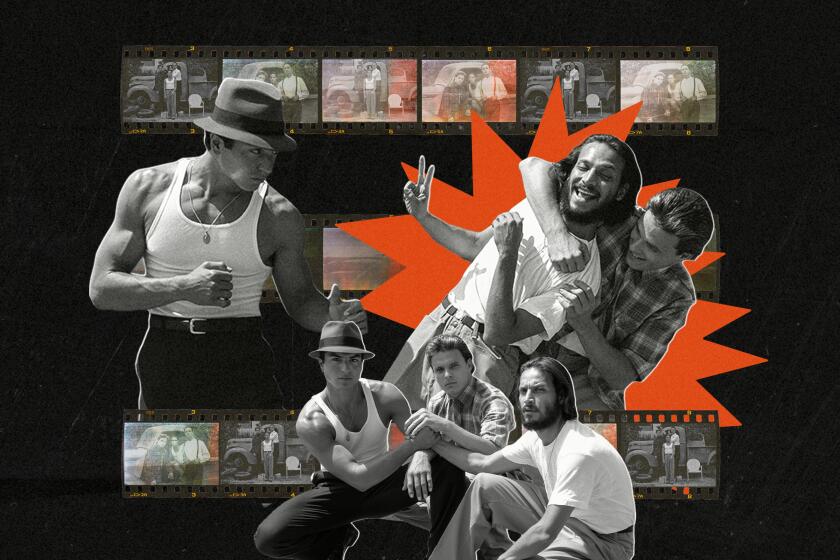Animators love them, audiences respond to them, so why isn’t there more adult animation like ‘Sausage Party’?

Watch the trailer for “Sausage Party.”
When Seth Rogen and Evan Goldberg were pitching their latest movie, “Sausage Party,” to studios, they got a consistently maddening reaction.
“Everyone would laugh hysterically, and then say, ‘No way,’” said Goldberg, who serves as a writer and producer on the film about a hot dog on an existential quest who uses foul language and engages in amorous relations with other food items. “The head of one studio was laughing so hard at our presentation he was crying, but they never called us back. At another one, before we even got to our cars, they called us and said, ‘Yeah, no, not gonna happen.’”
Though Rogen and Goldberg’s Point Grey Pictures has delivered profitable, moderately budgeted R-rated live-action comedies like “This Is the End” and “Neighbors,” “Sausage Party” was a risk most in the industry weren’t willing to take: an R-rated animated movie.
After its opening weekend, that risk already seems to be paying off — made for around $19 million, co-financed by Sony Pictures and Annapurna Pictures, “Sausage Party” grossed a robust $33.6 million this weekend, well ahead of industry projections. The movie earned an 84% fresh rating from Rotten Tomatoes, suggesting it will continue to play well, and enjoy a substantial audience on home entertainment platforms.
“Sausage Party’s” surprisingly strong performance suggests the movie is filling a void in the marketplace, according to Sony distribution chief Rory Bruer.
“I think it says that [audiences] long for fresh material, things that are creative and innovative, something different. But that’s if you get it right,” he said. “And [we] did.”
When it comes to R-rated feature animation, “Sausage Party” is in extremely limited company. Perhaps the best-known example in wide release in the last 20 years is “South Park: Bigger, Longer & Uncut,” the 1999 feature based on the Comedy Central series that ended up grossing $83.1 million worldwide. Five years later the same creators would have another hit with “Team America: World Police,” another ribald satire told using marionettes.
Despite those successes, major American animation studios that rely on family audiences to earn back their hefty budget have steered clear of R-rated content.
“In this country, there’s an assumption that if it’s an animated feature, it’s for kids,” said James Fino, a partner at the Burbank stop-motion animation studio Starburns Industries. “We’re all brought up that animation equals Disney.”
Starburns produced “Anomalisa,” the R-rated stop-motion animated drama directed by Charlie Kaufman and Duke Johnson, which earned an Academy Award nomination earlier this year and near universal praise from critics. At the time of its production, the notion of adult-oriented animation was rare enough that the film’s producers found themselves having some strange conversations with the Motion Picture Assn. of America.
“We called to ask [the MPAA] about full-frontal nudity with a male puppet. We wanted to know, ‘Does showing his penis automatically make it an R?’” Fino said. “I got transferred to six different people. ‘How long is it on screen? Is it erect?’ Finally the lady said, ‘You’re making me laugh cause I haven’t had to have this conversation since ‘Team America.’”
One of the dilemmas of R-rated animation is attracting the right audience — and not attracting children.
“We were conscious about the whole R rating when we were making this film,” said Starburns partner Joe Russo II. “We didn’t want people to accidentally bring a kid.”
Though the movie ended up earning an underwhelming $5.4 million at the worldwide box office, it has served as a creative calling card for Starburns, which is currently shopping another animation project intended for a mature audience, “Bubbles,” about Michael Jackson’s chimpanzee companion.
This summer another R-rated animated film became a box-office surprise — “Batman: The Killing Joke.” The first animated “Batman” film to be given an R rating by the MPAA, “The Killing Joke” was green-lighted as a direct-to-video title at Warner Bros Animation, but ended up grossing $3.8 million in a two-day theatrical release by Fathom Events. Based on the 1988 DC graphic novel of the same name, the movie contains scenes of violence and sexual situations.
“We knew the content was likely to take us into R-rated territory,” said Sam Register, president of Warner Bros. Animation and Warner Digital Series.
Register said the success of the film left him open to developing more R-rated animated DC properties.
“Clearly, R-rated animated content is something audiences want,” he said.
Over the years, there have been adult animated films that caught on, such as “Fritz the Cat,” the X-rated, 1972 Ralph Bakshi movie; “Heavy Metal,” the 1981 science-fiction anthology, and “Akira,” the 1988 Japanese dystopia that introduced many American moviegoers to anime for the first time.
While American movie studios have been reticent to make animation for adults, the form is thriving on TV, where such shows as Netflix’s black comedy “Bojack Horseman,” FX’s spy show “Archer” and the Cartoon Network’s evening block of programming Adult Swim, have found loyal audiences.
For “Sausage Party,” Goldberg and Rogen recruited a veteran of DreamWorks Animation’s “Shrek” franchise, Conrad Vernon, to direct, and teamed him with Greg Tiernan, a founder of a Vancouver-based animation company, Nitrogen Studios Canada.
“It was like telling a kid you get to live in a candy store now,” Goldberg said, of hiring Vernon. “He could have made two more ‘Shreks.’ But he explained to us that every animator wanted to do this. Everybody who makes Disney and Pixar films are adults — they have sexual thoughts too.”
Fino said Starburns is finding studios increasingly receptive to adult-oriented animation, and that streaming services like Netflix and Amazon are also intrigued.
“For generations all these artists in the studios have been told what they can’t do,” Fino said. “They do it off to the side in sketches and white boards. Finally, there’s a sense of freedom that they can express themselves.”
Times staff writer Tre’vell Anderson contributed to this report.
Follow me on Twitter for more movie news: @thatrebecca
ALSO
How Seth Rogen and Michael Cera got away with showing an orgy in ‘Sausage Party’
It’s a ‘Sausage Party’ at the box office
Review: Seth Rogen and friends serve up a filthy, funny ‘Sausage Party’
Did the studios figure out how to best play the Rotten Tomatoes game this weekend?
More to Read
Only good movies
Get the Indie Focus newsletter, Mark Olsen's weekly guide to the world of cinema.
You may occasionally receive promotional content from the Los Angeles Times.







